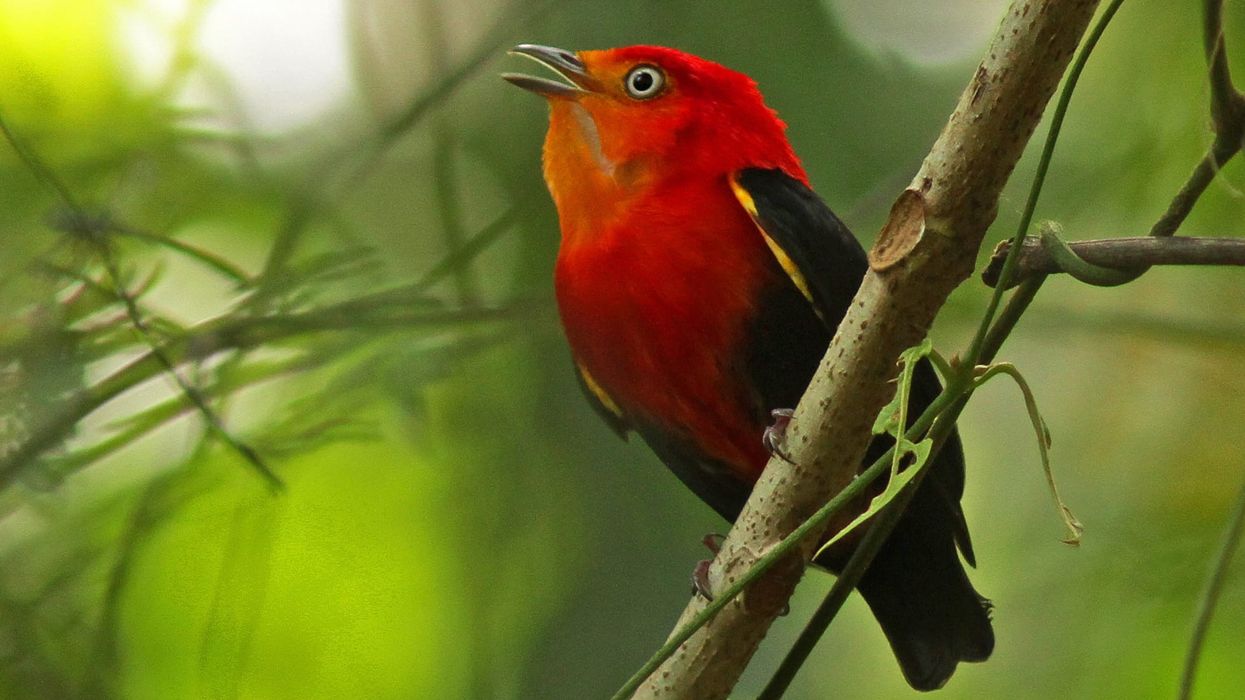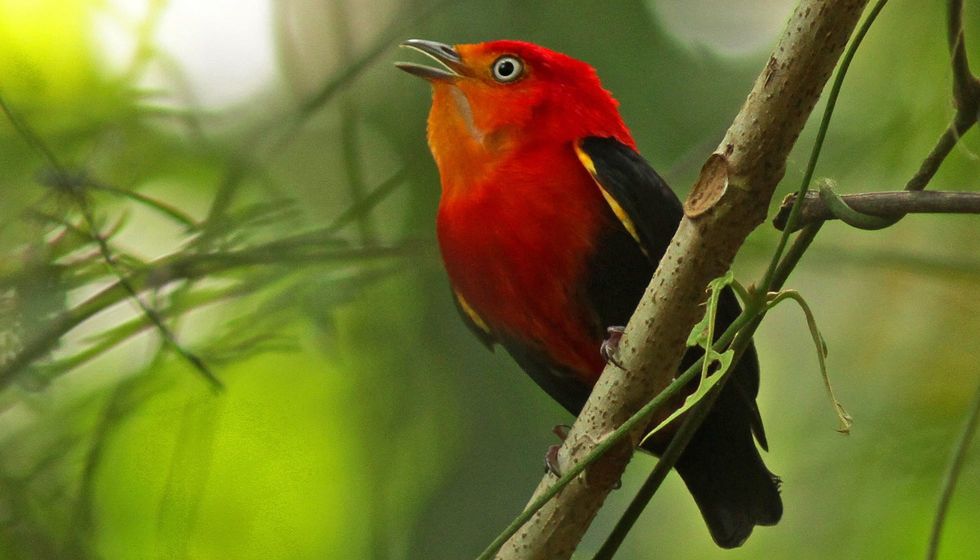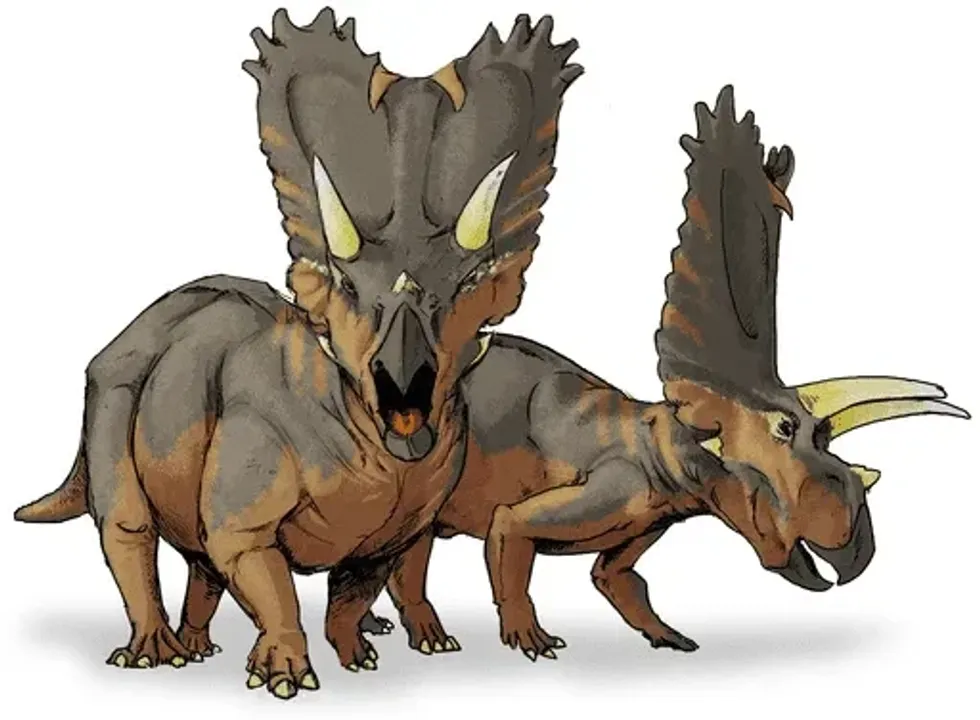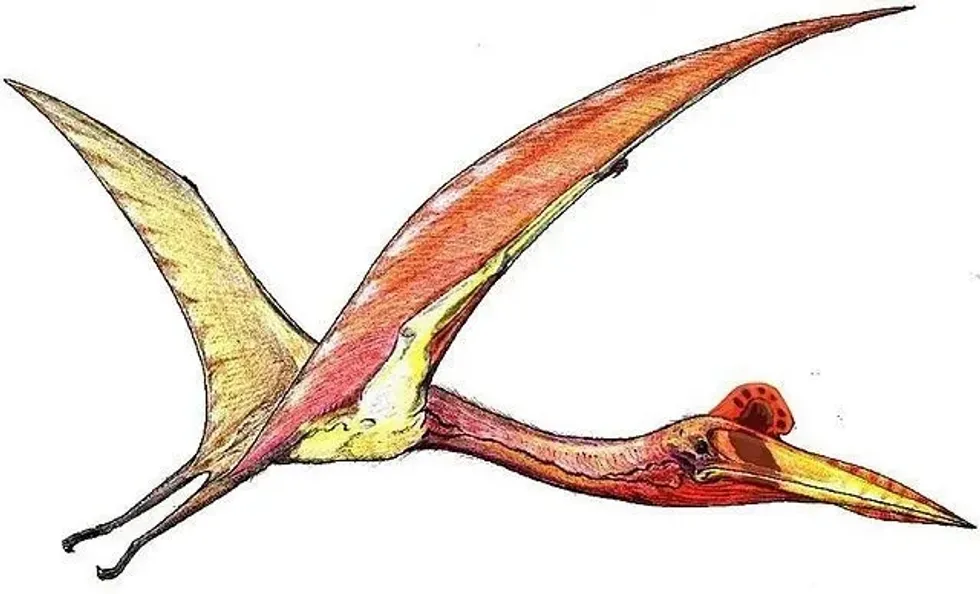The club-winged manakin (Machaeropterus deliciosus) is one of the most famous birds when it comes to elaborate courting rituals and baroque dances.
However, there are many more interesting aspects and facts about this tiny species of bird.
Along with adaptations in their physiology (particularly for the purpose of reproductions) and the qualities that have been honed by careful mate selection, these birds also are called club-winged manakins owing to the sound their wings make when they rub together.
These noises sound like the noise of crickets, loud beeps produced by vibrating their feathers at incredibly high speeds.
These wings serve the purpose of increasing the physical appeal of a male club-winged manakin to a female club-winged manakin that is interested in procreation.
Keep reading and learning to find out more about this small species of manakin! Afterward, do read our other articles on the bee hummingbird and white wagtail.
Club Winged Manakin Interesting Facts
What type of animal is a club-winged manakin?
A club-winged manakin (Machaeropterus) breeding species is a type of bird that belongs to the biological phylum of Chordata. These avians belong to the group of passerine birds that are often distinguished from other bird species by the anatomical arrangement of their toes that aids highly in perching. These birds use their wings as sound-producing apparatus.
What class of animal does a club-winged manakin belong to?
The club-winged manakin belongs to the class of a bird or more specifically, to the biological class of aves.
How many club-winged manakins are there in the world?
There is no specific number regarding the population of the club-winged manakin in the world.
However, suffice it to say that while the bird is a species of least concern at present with respect to its conservation status, the population trend of this species is on a decline, and in a short period of time, targeted efforts for the preservation of the species might have to be taken.
Where does a club-winged manakin live?
A club-winged manakin lives in the woods of the South American Continent, in Colombia and Ecuador. Their primary habitat range is in cloud forests on the western slopes of the Andes Mountains.
What is a club-winged manakin's habitat?
A club-winged manakin’s habitat generally comprises wet or humid forests with plenty of trees and foliage. The club-winged manakin or the Machaetoperus primarily feeds on fruits, prefers its habitat to have an abundance of fruits along with insects.
Who do club-winged manakins live with?
Club-winged manakins live in groups with other birds of their own species in their range of habitat.
How long does a club-winged manakin live?
The average lifespan of these birds is almost similar to other subspecies from the family Pipridae. They generally live for around 10-12 years in the wild.
How do they reproduce?
The process of reproduction for club-winged manakin is a long one starting with the male making a targeted effort to impress the female club-winged manakin by engaging in a showboating activity wherein they make mechanical noises similar to those made by crickets by flapping their wings and allows the tips of each wing to rub against the other at its perigee.
In fact, this species of bird has, over generations, evolved to be able to make this kind of noise repeatedly by changing its bone structure.
This anatomy of the bird is also referred to as the spoon and washboard anatomy. Having selected a mate, the female lays a clutch that is usually only made of two eggs.
The female then incubates these eggs for about three weeks.
What is their conservation status?
The club-winged manakin is considered or listed to be a species of Least Concern with respect to its conservation status. However, recent trends and studies show that the population seems to be dropping due to a gradual loss of habitat.
Club Winged Manakin Fun Facts
What do club-winged manakins look like?
The club-winged manakin is a fairly small bird that is observed to be dimorphic according to their sexes which means that female club-winged manakin is dull in color as compared to a male club-winged manakin.
The birds are generally colored with black and white feathers near the periphery of the wings and a red wine color that extends through the plumage, belly, and backside of the bird.
The beak is slender and pointed. The red-capped manakin is another pretty bird to check out!

*Please note the main image and this image are of a Crimson-hooded manakin that belongs to the same family as the club-winged manakin. If you have an image of a club-winged manakin please let us know at hello@kidadl.com.
How cute are they?
The club-winged manakin is extremely cute especially when the male birds with solid wing bones engage in showboating to attract the attention of female club-winged manakins.
How do they communicate?
As per Kimberly Bostwick, the club-winged manakins generally communicate with the help of their hollow, club-like wing feathers that manakins use to clap against each other and create acoustic sounds (whooshing noises similar to those created by a cricket). It is referred to as a spoon and washboard sound and can be best described as buzzes and snaps.
How big is a club-winged manakin?
A club-winged manakin generally measures about 4.9 in (12.4 cm) which are measured from the tip of its beak to the tip of its tail. This means it would be almost lesser than half the size of a crow.
How fast can a club-winged manakin fly?
A club-winged manakin, in addition to hollow bone structures in its wings, also has large muscles supporting them. The following body design facilitates the incredibly fast movement of these wings, creating an acoustic sound.
Flapping its wings about 100 times in a second, the club-winged manakin has a higher flapping frequency than a hummingbird. However, these wings are not optimal for flight and therefore, the bird cannot fly very fast.
How much does a club-winged manakin weigh?
The average weight range of club-winged manakin is around 0.7 oz (19.8 gm). It is around the same size as the house finch.
What are the male and female names of the species?
No specific designation has been allotted to males and females of club-winged manakin species. Hence, they are known as males and females respectively. The male bird is wine-red, black, and white in color while the female is dull green-yellow with an orange or yellowish spot below the eye.
What would you call a baby club-winged manakin?
The offsprings of club-winged manakin are known as juvenile, chick, or baby club-winged manakin.
What do they eat?
Club-winged manakins generally prefer to eat berries since they require plenty of nutrition to match and sustain their physical activity. However, these birds (manakins) have also been known to eat insects from time to time.
Are they dangerous?
To date, there have been no reports of the club-winged manakin being dangerous toward humans.
Would they make a good pet?
These animals are not appropriate to be kept as pets as they are wild animals.
Did you know...
The club-winged manakin is capable of producing 1400 different sounds in its 100 wing flaps per minute with its hollow bone structure.
The hollow bone structure is a quality that has evolved by the sexual selection of the species by itself.
The movement of a club-winged manakin is referred to as a raking movement and it produces a whooshing sound.
This bird species has also been mentioned in Richard; O'Neill, John Patton & Eckelberry, Don R. (1991): A guide to the birds of Trinidad and Tobago (2nd edition), Comstock Publishing.
The club-winged manakin has one of the fastest limb movements of any bird species. Their sound production adaptations have also been discussed by Charles Darwin.
What kind of sound does club-winged manakin produce?
Club-winged manakins make use of their hollow structured wings and produce an acoustic sound that resembles the sound of a spoon sliding against a washboard and ornithologists and wildlife enthusiasts describe this sound as buzzes and snaps. However, these sounds have been known to be musical and quite entertaining!
When this species of bird, especially the males, flaps its wings, it’s referred to as a raking movement and generally creates a whooshing sound pattern too.
Why do club-winged manakins shake their wings?
Club winged manakins generally shake their wings to attract females by making their characteristic acoustic sound. The male club-winged manakin expresses his interest by playing a song for his female counterpart by playing his song for her created with nothing but the club-shaped anatomy of its wings.
Here at Kidadl, we have carefully created lots of interesting family-friendly animal facts for everyone to discover! For more relatable content, check out these rufous hummingbird facts and Atlantic canary facts pages.
You can even occupy yourself at home by coloring in one of our free printable club-winged manakin coloring pages.
* Please note that this is an image of a white-bearded manakin, not a club-winged manakin. If you have an image of a club-winged manakin, please let us know at hello@kidadl.com.










